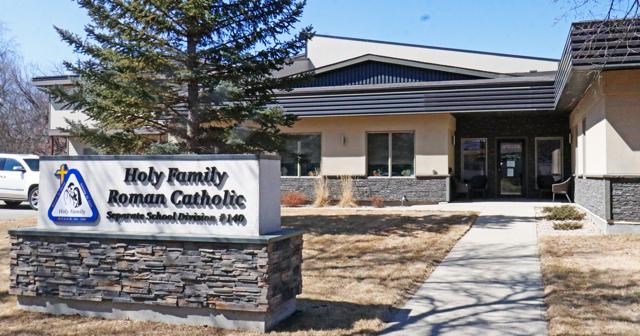WEYBURN – The board of trustees of the Holy Family Roman Catholic Separate School Division had a full explanation provided on the status of independent schools, such as how they are run, and what funding they do or don’t receive, in light of recent controversy around independent schools in Saskatchewan.
Kevin Gabel, the provincial superintendent of independent schools, joined the board meeting on Wednesday night via Zoom, and was able to explain what the categories of independent schools are and how they are being handled by the Education ministry.
There are five categories of independent schools, plus a new category that was just announced in the budget speech in the spring at the Legislature.
The first category is registered independent schools, which do not receive any provincial funding and do not have to teach the provincial curriculum.
Secondly are alternative independent schools, such as the Ranch Ehrlo school, which provides education to students who are wards of the province, and are for students that have severe needs, such as being non-verbal or non-mobile students.
The third category is associate schools, which run on voluntary operating agreements with a school division, and have funding at 80 per cent.
Historical high schools, which are classed as “schools of necessity”, have long-standing historical arrangements with the ministry.
Fifth are qualified independent schools that meet very specific criteria, including employing professionally qualified teachers, and teach the Saskatchewan curriculum.
The newest category, which has yet to be finalized by the ministry, is for certified independent schools. They don’t wish to be part of a school division or to have an agreement, they have to have been in operation for five years. They must pay their teachers at least 90 per cent of the STF grid, with a maximum teacher-student ratio of 25 students per teacher, and a minimum enrolment of 150 students.
Asked what level of funding the various categories receive from the province, Gabel said it varies according to the type of category. For schools like Ranch Ehrlo, which teaches severely disabled students, they receive between $30,000 and $50,000 per student, depending on the students’ needs. Other schools, like Cornwall, get a flat rate around $20,000 per student, “due to the needs of those students.”
The qualified independent schools get 50 per cent of the per-student average funding. Gabel explained this figure is derived by the total amount of funding available through the ministry for K-12 students, and divided by the number of students, this works out to about $11,800 per student this year, so a qualified independent school would get about $5,900 per student.
The new category of schools will get about 75 per cent funding, once the amendments are made to enable them to go ahead, while historical high schools and associate independent schools get about 80 per cent funding.
The historical high schools, of which there are now only four, are the only category to get 20 per cent of capital costs. Gabel noted that Briercrest academy in Caronport had been in this category until this year, but they switched to associate status, so they no longer qualify for any capital funding.
“So the more money you get, the more scrutiny and expectations there are?” asked education director Gwen Keith.
“Absolutely. Accountability is tied to dollars,” answered Gabel, noting that teachers in independent schools are the most supervised teachers in the province, as he or someone from his department visit the classroom of the teachers three times a year.
Asked how many follow the provincial curriculum, he answered, If a school receives funding, they must have professional qualified teachers registered with the teachers’ regulatory board. A registered independent school does not have to employ these teachers, nor do they have to teach the provincial curriculum, with some of these school using a faith-based curriculum.
There are currently 62 independent schools in Saskatchewan, with two that were just shut down, and one had its certificate of registration revoked for non-compliance when an individual refused to resign from the staff. Gabel also noted that in the recent controversy around an independent school, the individuals involved have agreed not to teach any more at any independent school in Saskatchewan.
Some changes in the legislation for independent schools were made over the summer, and some new amendments are now in the works as well, added Gabel.
Among the changes which took effect in August, is that the minister has the power to appoint a trustee or administrator to take over an independent school; any criminal allegations have to be reported to the ministry; and the minister can put a school on probation for up to two years.
The changes that are being worked on right now are to increase transparency and accountability, he said. If, for example, a school and a church are run by the same board, there needs to be a separation, so the school has its own non-profit board, so it’s clear what funding there is and what it’s being used for.
In addition, the principal of an independent school cannot be on the board as a voting member, to remove any possibility of a conflict of interest, added Gabel.
As to how many students are in independent schools, he said the historical high schools have a total of 634 students, and with non-resident (or foreign) students added in, have 849 in total.
The qualified independent schools total 1,558; associate schools have an enrolment of 2,459, or 2,569 with non-resident students included; and there are 4,350 home-schooled students in the province, as of Sept. 30.





